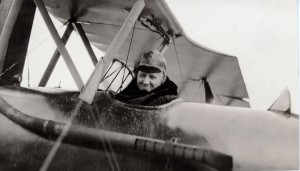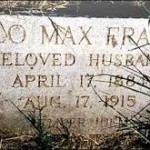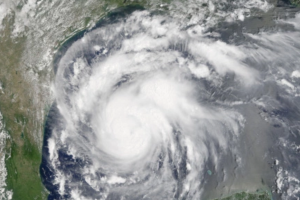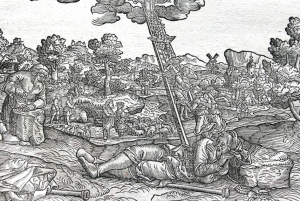 Last week, I asked Priscilla Pope-Levison, author of Building the Old Time Religion: Women Evangelists in the Progressive Era (NYU Press, 2014) to contribute a post for Women’s History Month. Here is her second post, a riveting account of the entrepreneurial spirit of Florence Crawford, whose evangelistic association is alive and well today.
Last week, I asked Priscilla Pope-Levison, author of Building the Old Time Religion: Women Evangelists in the Progressive Era (NYU Press, 2014) to contribute a post for Women’s History Month. Here is her second post, a riveting account of the entrepreneurial spirit of Florence Crawford, whose evangelistic association is alive and well today.
________________
I thought I’d seen it all: Maria Woodworth-Etter, who fell into forty-five minute trances with her right arm raised above her head, swaying, and her index finger pointed upward, or Uldine Utley, a child prodigy dressed in her signature all-white dress, hose, and shoes. This fourteen-year-old filled Madison Square Garden twice a day for four weeks. Then I made a trip from Seattle to Portland, Oregon, where I met, face to face, the legacy of Florence Crawford, a Pentecostal evangelist from those early heady days of the 1906 Azusa Street Revival. From Los Angeles, Crawford traveled north and settled in Portland, where she founded the Apostolic Faith Mission (AFM). Her use of transportation technology for evangelism is an entrepreneurial marvel—practically even a miracle.
Crawford began modestly enough with a gospel wagon purchased for $250 in 1908. She owned only the wagon; horses had to be hired for each evangelistic meeting in a Portland park. A taut white canvas stretched over each side of the wagon provided a surface for gospel slogans printed in large capital letters: PREPARE TO MEET THY GOD and TURN YE FOR WHY WILL YE DIE. She quickly transitioned from a horse-drawn wagon to the automotive horsepower of a Federal truck, with detachable seats for carrying gospel tracts. In 1913, a dozen workers took the truck on its first evangelistic trip, driving from Portland to Vancouver, British Columbia, a one-way distance of more than 300 miles. Within two years, by 1915, Crawford had purchased enough automobiles, fourteen in all, to ensure that each city with an AFM mission—Vancouver, Seattle, Tacoma, Eugene, Dallas, and Portland–had at least one car to use for evangelism.
In 1919, after she had amassed a garage full of automobiles, Crawford purchased a 3-passenger Curtiss Oriole, the Sky Pilot. Her son, Raymond, pioneered aerial evangelism—dropping religious papers from the air—1000 papers over rural Idaho and 9000 invitations over Portland. Targeted areas for the literature drop included Oregon’s state penitentiary, reform schools, poor farms in Multnomah and Clackamas counties, and town centers throughout greater Portland on bustling Saturday afternoons. Dive bombing areas with religious literature didn’t last long, however, because in 1922 legal restrictions were passed, prohibiting the practice. With no more need for the Sky Pilot, Crawford sold the plane.
Why limit herself to road and air anyway? Crawford set her sights on sailors aboard merchant ships from many countries docked in the Portland harbor, located about 100 miles from the Pacific Ocean on the Willamette River. For harbor evangelism, Crawford bought a 28-foot motorboat named the Morning Star. AFM workers steered the Morning Star alongside docked ships, and, when given permission by the captain, set up an extension ladder to climb aboard in order to distribute religious literature and invite sailors to services at the mission. For ships whose captains prohibited them on board, the workers launched gospel grenades— waterproof packets of religious papers printed in the language of the sailors on that ship. The grenades had to be thrown as high as fifty feet in the air in order to land on deck.
Obviously, Crawford was nothing if not entrepreneurial in her use of transportation technology for evangelism. Yet there is something distinctive in the way she chose to exercise that entrepreneurial spirit: she hunkered down in one location and launched evangelistic forays from her Portland headquarters. She bought cars to be driven up and down the coast from Oregon north to British Columbia. She bought a plane to drop literature throughout the Pacific Northwest. She bought a boat to ply the Portland harbor.
Prior to the Progressive Era (1890-1920), women evangelists with that same entrepreneurial spirit chose to itinerate. Jarena Lee, for example, in the 1820s and 1830s itinerated throughout New England, north into Canada, and west into Ohio, traveling by foot, stagecoach, and boat to preach in churches, schools, camp meetings, barns, and homes. Her contemporary, Nancy Towle, preached throughout the United States, Canada, England, and Ireland. These evangelists earned the moniker, “rootless women” (Elizabeth Elkin Grammer, Some Wild Visions).
Crawford belonged to a later generation of women evangelists, who settled down from a wandering itinerancy and built institutions to gather in converts, engage in evangelism, and establish a legacy in brick and mortar, in the bylaws and printed materials of their churches, denominations, schools, rescue homes, and rescue missions.
Like Mattie Perry, who, at a nondescript crossroad at the foothills of the Appalachians, opened Elhanan Training School in a former hotel, which she refurbished and furnished.
Like Emma Whittemore, who launched her first of nearly one hundred Door of Hope rescue homes amidst the squalor of a New York City tenement.
Like Bishop Mary Lena Lewis Tate, who gathered her converts first into “Do Rights” bands, then into her denomination, the Church of the Living God, the Pillar and Ground of the Truth.
These largely unsung entrepreneurial women evangelists resolved to settle down and build institutions, often financing them with little more than donations of pennies and crates of apples. Remarkably, many of their institutions continue a century later, including Crawford’s Apostolic Faith Mission, which sends across the globe from its Portland headquarters more than two million pieces of literature every year.












